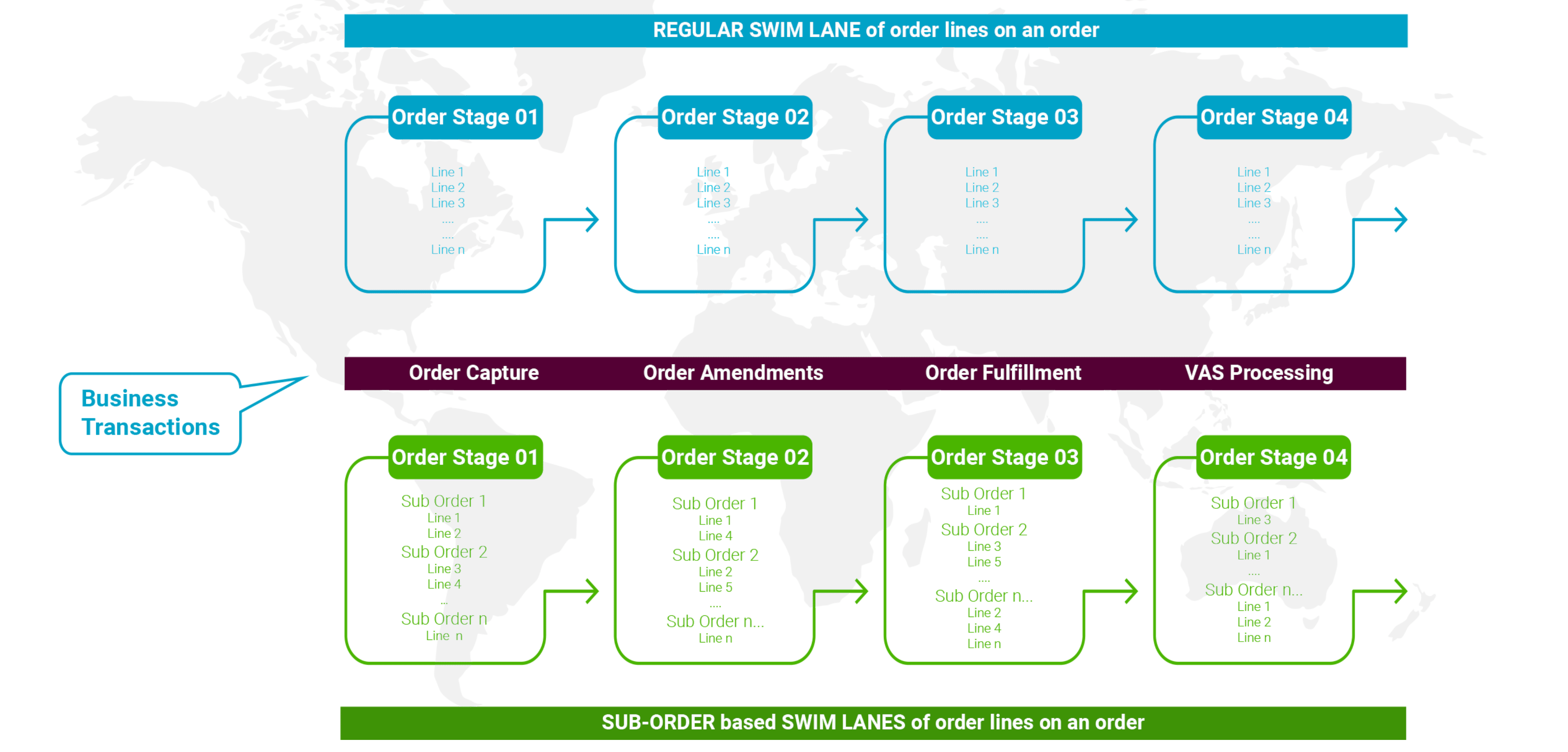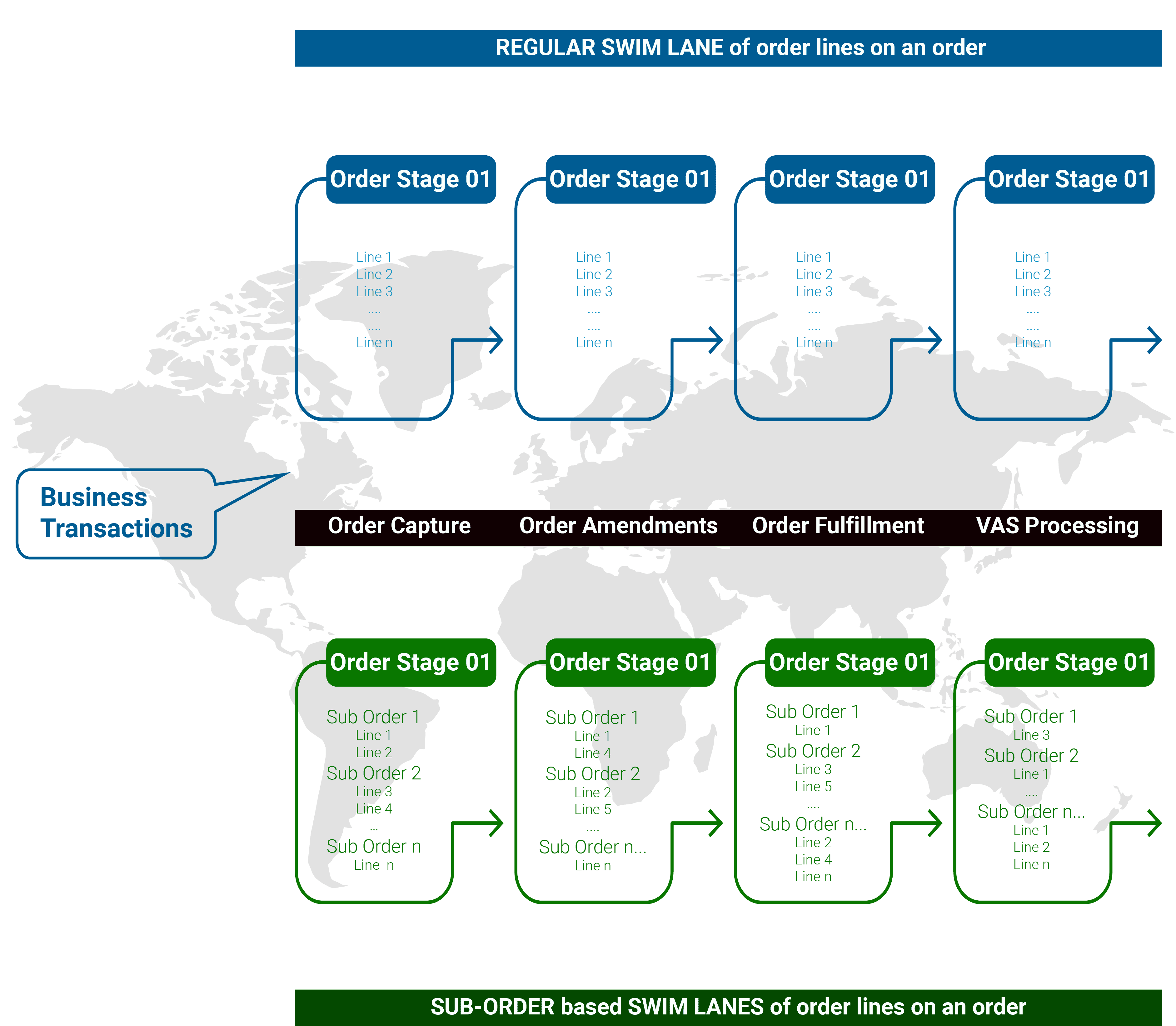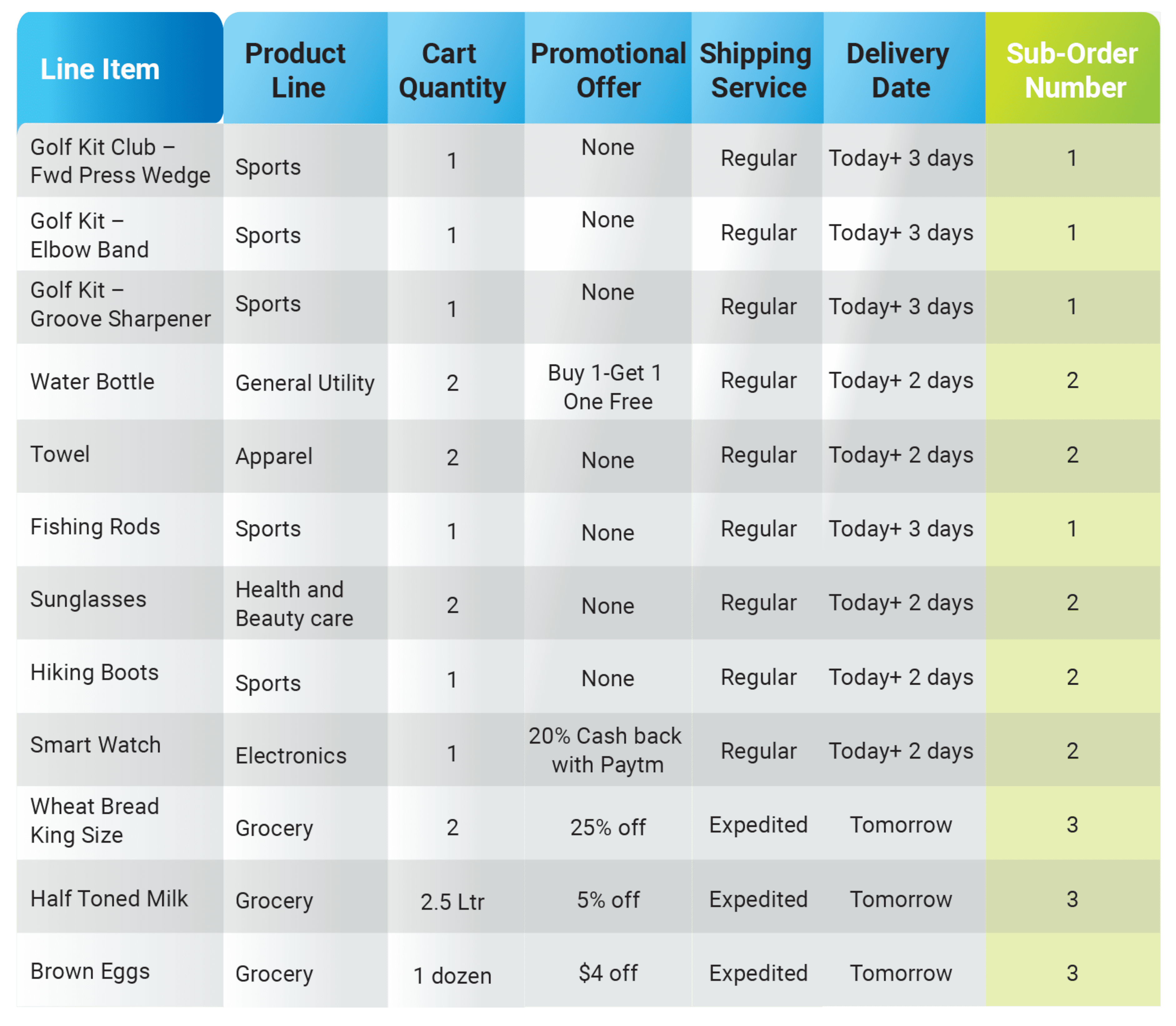In this edition, we continue our journey toward getting a single-basket solution journey encompassing order decomposition. This is the second part of our single-basket solution journey series. We have already covered the foundational aspect of the single basket in the last edition . Now let us see how we can unfold this single-basket journey with the solution rationale for such a view.
The order decomposition, in its fundamental form, aims to provide a consistent swim lane that can be deployed to a group of order lines from the larger set of entire order lines on the order. Consistent swim lanes are essential to businesses to manage customer expectations on the delivery dates, reduction of logistics costs by virtue of consolidation, optimize operational costs of picking/packing, and dynamic inventory allocation when sourcing from one or many locations on different dates. Order decomposition makes it possible to identify bottlenecks, determine which operations contribute most to delays, and streamline processes so that they operate more efficiently.
Order lines can vary greatly depending on their purpose. In the example from our previous edition, we see that order lines belong to diverse product lines/departments, have varied delivery dates, and carry unique discounts at any point in time. In reality, there could be more attributes that increase the diversity quotient of the order line. To address these challenges to achieve a consistent swim lane, businesses tend to decompose large orders into a concept called sub-order. Sub-orders are used to ensure that each order line carries a specific set of attributes. They make sure that no attribute gets lost when breaking down a larger order into smaller parts.
The business rules are employed to determine the right sub-orders, which are nothing but a group of order lines. These rules govern sub-orders being orchestrated, validated, fulfilled, and amended throughout their life cycle. The order management application holds the relation to identifying individual order lines on any given sub-order. In layman’s terms, a suborder is a virtual model for a group of lines having identical business characteristics of larger order.


This automatically eases the complexity of large order management (even more in B2B when order lines are > 100-200 on a single order) and provides business advantage to apply tailor-made rules, offer personalized experiences, accurate management of business documents, optimize operational costs for supply chain business at each sub-order level.
Example
The business view of the diversified single basket view for the example in the previous edition. (Refer to the green column post-sub-order model has been realized by decomposition engine)`


Now that we understand the concept of sub-orders, let us see what the deliberations are around breaking one large into individual multiple smaller orders instead of sub-order modeling in an order management application. Can the order lines change their sub-order groups during the life cycle?
Stay tuned for the next edition.
Author: Jagadesh Hulugundi





